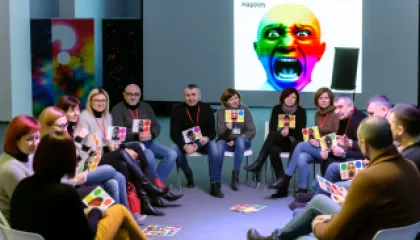Applying Lessons from 'Inside Out' to Understand Cognitive Development
There's no denying that Pixar's animated film 'Inside Out' is a delightful cinematic experience. But beyond its entertainment value, the movie provides a profound exploration of cognitive development in adolescents. This article will examine the lessons from 'Inside Out' and how they can help us to understand cognitive development.
Understanding Cognitive Development
Cognitive development refers to the process by which a person perceives, thinks, and gains an understanding of their world through the interaction of genetic and learned factors. Among the four stages of cognitive development identified by psychologist Jean Piaget, the 'Inside Out' movie mainly illustrates the transition from the concrete operational stage to the formal operational stage.
Lesson 1: The Importance of Emotional Understanding
In 'Inside Out', the protagonist, Riley, experiences a range of emotions as she navigates through significant life changes. These emotions are represented by five characters: Joy, Sadness, Fear, Disgust, and Anger. The movie illustrates that each emotion has its importance in shaping our experiences and decisions.
“Emotions are not just the fuel that powers the psychological mechanism of a reasoning creature, they are parts, highly complex and messy parts, of this creature's reasoning itself.” Martha Nussbaum, American Philosopher
This underscores the theory of Emotional Intelligence, which suggests that our ability to understand, manage, and express our emotions plays a vital role in our overall cognitive development.
Lesson 2: The Role of Memories and Experiences
'Inside Out' beautifully illustrates how our past experiences, stored as memories, shape our emotional responses. In the movie, Riley's core memories play a significant role in her identity formation and emotional reactions to different situations.
This relates to the cognitive development concept of 'schema,' a mental framework that helps us organize and interpret information. Schemas, built from past experiences, guide our future actions and responses.
The Formation of New Schemas
As Riley encounters new experiences in 'Inside Out,' her schemas change. This is reflected in the transformation of her Islands of Personality - representations of different aspects of her identity. It is an excellent illustration of 'accommodation,' a cognitive process where existing schemas are altered or new ones are created to fit new information.
Lesson 3: The Complexity of Emotions
One of the most significant lessons from 'Inside Out' is the understanding that emotions are complex and cannot be simply classified as positive or negative. For example, while Joy is often viewed as the desirable emotion in the movie, it is Sadness that ultimately helps Riley convey her feelings to her parents, resolving the narrative conflict.
“There can be no transforming of darkness into light and of apathy into movement without emotion” Carl Jung, Swiss Psychiatrist
This lesson is a crucial part of cognitive development as it promotes emotional maturity and a holistic understanding of oneself and others.
Lesson 4: The Significance of Emotional Expression
'Inside Out' teaches us that expressing our emotions is key to maintaining healthy relationships and mental well-being. When Riley suppresses her feelings of sadness and puts on a happy facade, she distances herself from her parents and friends. It is only when she openly expresses her emotions that she can reconcile with her parents and feel better about her situation.
This lesson is integral to cognitive development as it highlights the role of emotional expression in social interaction and personal growth.
Conclusion
While 'Inside Out' is an entertaining family film, it is also a rich resource for understanding cognitive development. The movie's depiction of emotions, memories, and experiences provides valuable insights into how we perceive and interact with the world. By applying these lessons, we can better understand our cognitive development and navigate our emotional landscapes.
The complexity of emotions, the importance of emotional understanding, the role of memories and experiences, and the need for emotional expression are all critical aspects of cognitive development. Pixar's 'Inside Out' not only brings these concepts to life but does so in a way that is accessible and engaging, providing viewers with a deeper understanding of their own cognitive processes.








